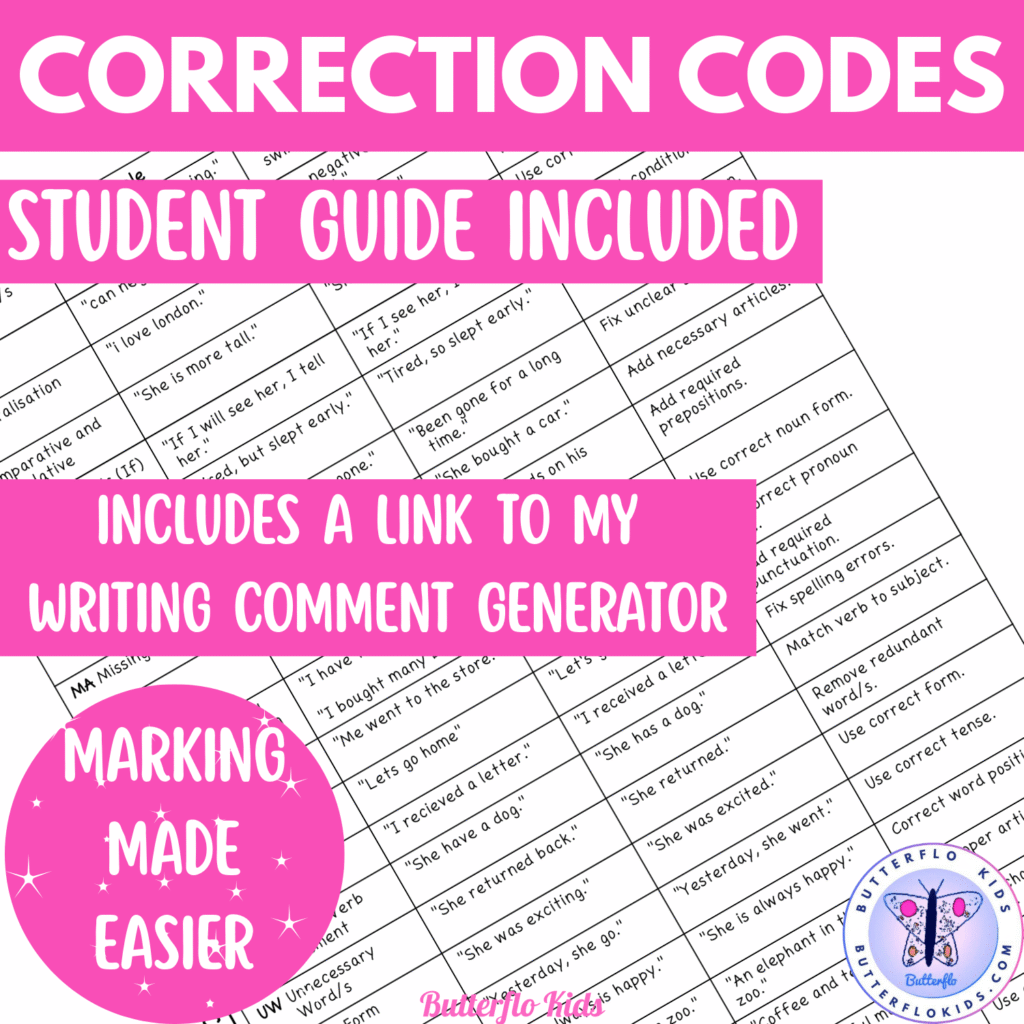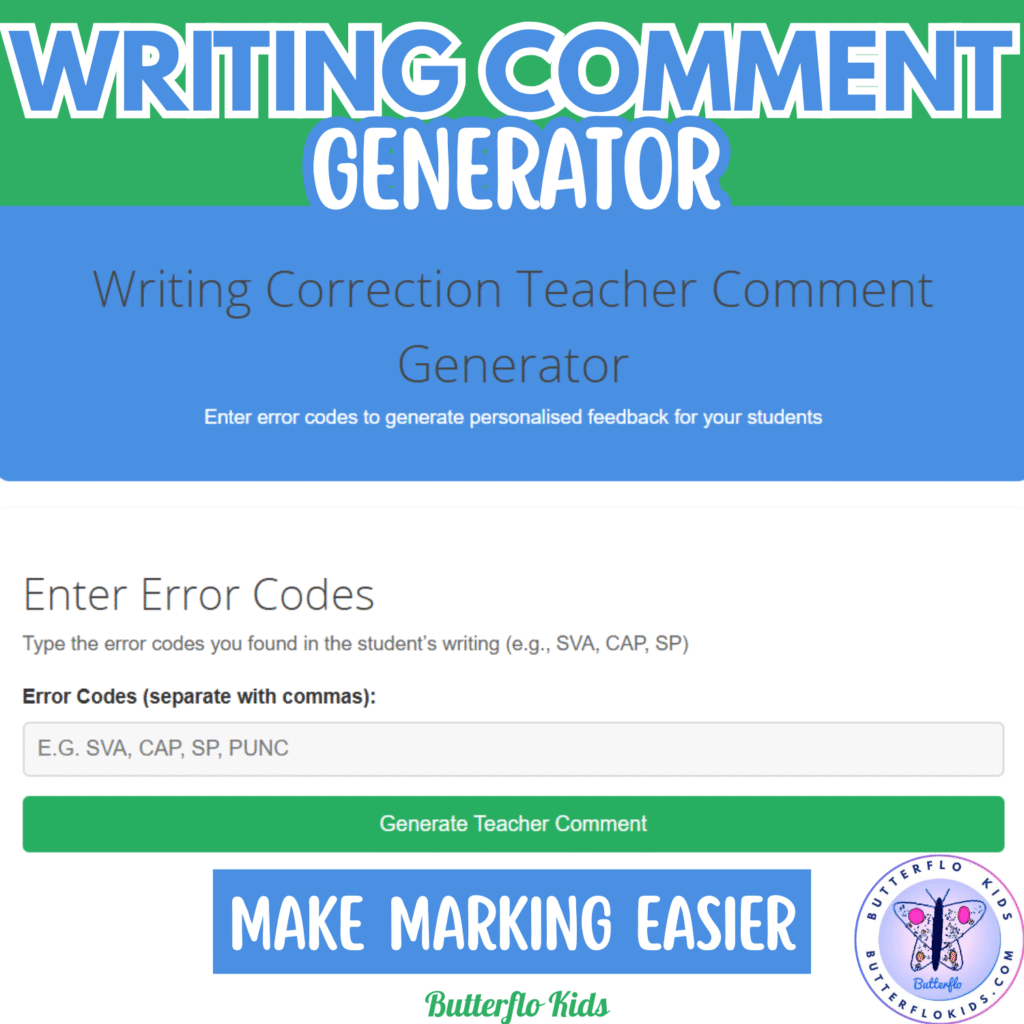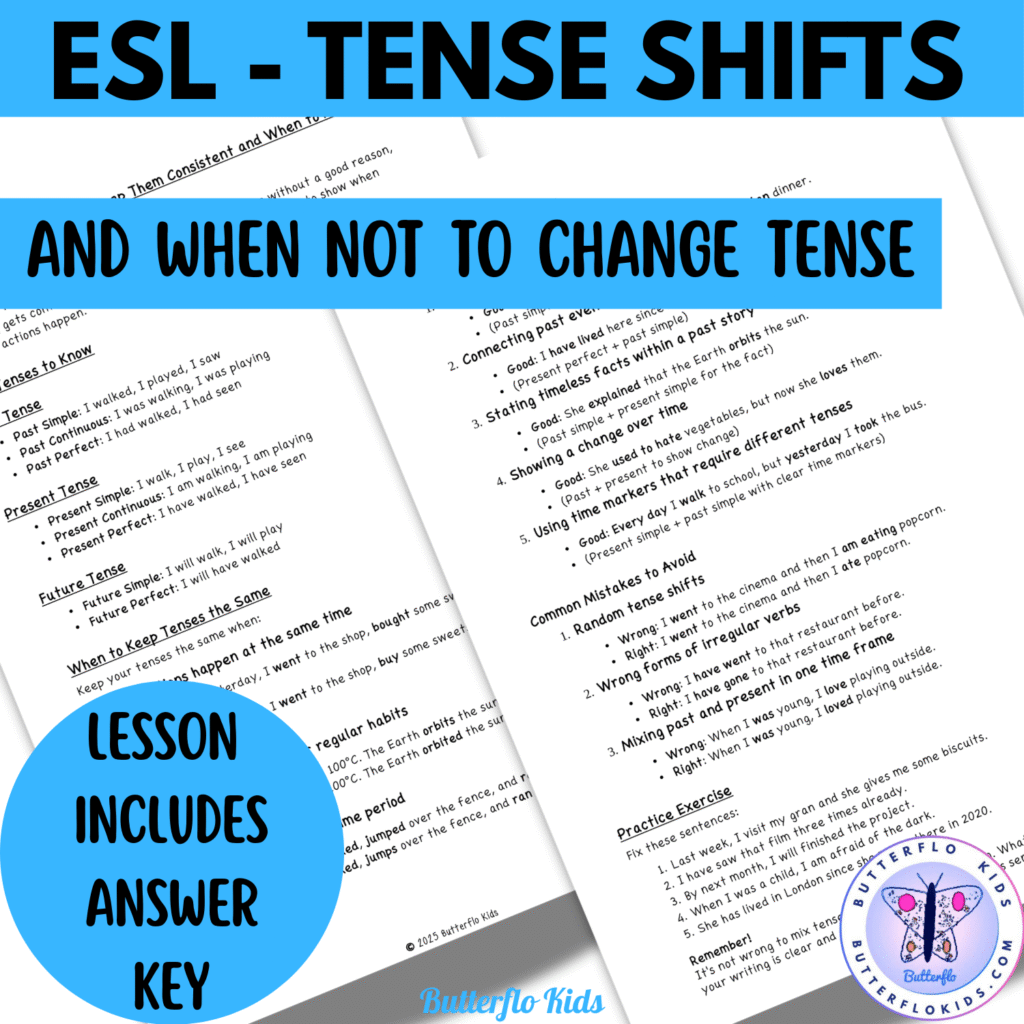
Shifts in verb tenses and when not to change them
Teaching Mixed Tenses: A Simple Guide That Actually Works
I created this mixed tenses lesson because my ESL students kept getting confused about when to change tenses and when to keep them the same. They knew individual tenses well enough, but putting them together in real writing? That’s where they struggled.
I wanted something simple that would clear up the confusion once and for all. So I made a straightforward guide that shows exactly when tense mixing is right and when it’s wrong.
Why Verb Tenses Cause So Much Trouble
Verb tenses tell us when things happen. When students mix tenses without a good reason, their writing gets confusing. But here’s the tricky part: sometimes mixing tenses is exactly what we need to do.
This confusion happens because many ESL students learn tenses separately. They practise past tense in one lesson, present tense in another. But real English mixes these tenses all the time.
The Basic Tenses Students Need to Know
Before tackling mixed tenses, students need to know these forms:
Past Tense:
- Past Simple: I walked, I played, I saw
- Past Continuous: I was walking, I was playing
- Past Perfect: I had walked, I had seen
Present Tense:
- Present Simple: I walk, I play, I see
- Present Continuous: I am walking, I am playing
- Present Perfect: I have walked, I have seen
Future Tense:
- Future Simple: I will walk, I will play
- Future Perfect: I will have walked
Most students know these forms. The problem comes when they need to use them together.
When to Keep Tenses the Same
I teach my students three clear rules for keeping tenses consistent:
Rule 1: All Actions Happen at the Same Time
When everything happens in the same time period, stick to one tense.
Good: Yesterday, I went to the shop, bought some sweets, and walked home.
Bad: Yesterday, I went to the shop, buy some sweets, and was walking home.
Rule 2: Writing About Facts or Regular Habits
Facts and habits stay in the same tense.
Good: Water boils at 100°C. The Earth orbits the sun.
Bad: Water boils at 100°C. The Earth orbited the sun.
Rule 3: Telling a Story in One Time Period
When you tell a story, keep the same tense throughout.
Good: The dog barked, jumped over the fence, and ran away.
Bad: The dog barked, jumps over the fence, and ran away.
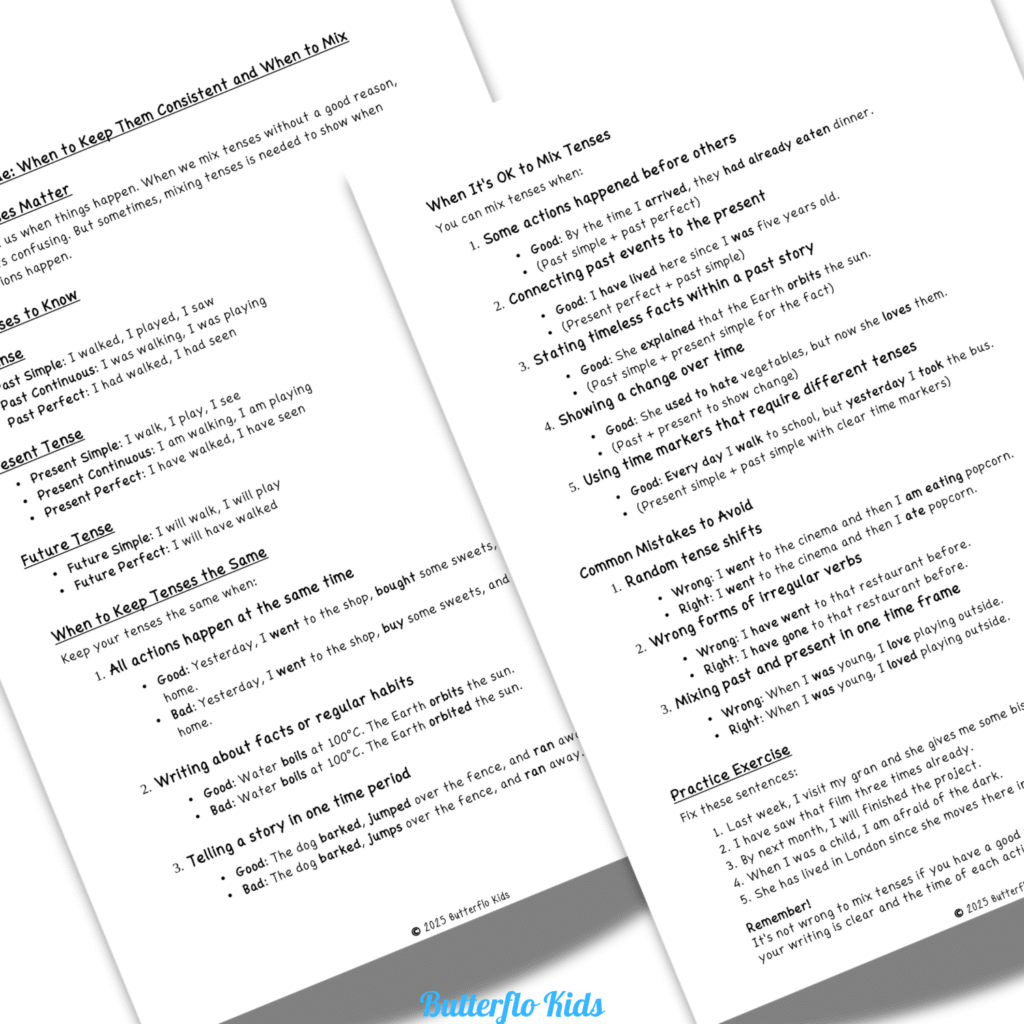
When It’s OK to Mix Tenses
This is where students get excited. They learn that mixing tenses isn’t always wrong! Here are the five situations where mixing makes perfect sense:
1. Some Actions Happened Before Others
When you need to show that one past action happened before another past action, use past perfect for the earlier action.
Example: By the time I arrived, they had already eaten dinner.
2. Connecting Past Events to the Present
Present perfect connects past and present time.
Example: I have lived here since I was five years old.
3. Stating Timeless Facts Within a Past Story
Some facts never change, even in past stories.
Example: She explained that the Earth orbits the sun.
4. Showing a Change Over Time
When things change from past to present, you need different tenses.
Example: She used to hate vegetables, but now she loves them.
5. Using Time Markers That Require Different Tenses
Words like “every day” and “yesterday” tell you which tense to use.
Example: Every day I walk to school, but yesterday I took the bus.
Common Mistakes I See All the Time
After years of teaching, I notice students make the same errors repeatedly:
Random tense shifts: Students change tenses for no reason.
- Wrong: I went to the cinema and then I am eating popcorn.
- Right: I went to the cinema and then I ate popcorn.
Wrong forms of irregular verbs: Past participles trip them up.
- Wrong: I have went to that restaurant before.
- Right: I have gone to that restaurant before.
Mixing past and present in one time frame: They forget to match the time period.
- Wrong: When I was young, I love playing outside.
- Right: When I was young, I loved playing outside.
Why This Lesson Works
I included practice exercises in my lesson because students need to fix actual mistakes. The exercises show real errors that ESL learners make:
- “Last week, I visit my gran and she gives me some biscuits.”
- “I have saw that film three times already.”
- “By next month, I will finished the project.”
When students correct these sentences, they see exactly how the rules work in practice.
The Key Message
I always tell my students: “It’s not wrong to mix tenses if you have a good reason. What matters is that your writing is clear and the time of each action makes sense.”
This takes the fear out of tense mixing. Students stop worrying about breaking rules and start thinking about meaning. They ask themselves: “When did this happen?” instead of “What’s the rule?”
Results I’ve Seen
Since I started using this lesson, my students write with much more confidence. They still make mistakes, but now they understand why certain combinations work and others don’t.
The practice exercises help them spot their own errors. When they see “I have saw,” they know something’s wrong. When they write about past events, they remember to keep the same tense unless time changes.
Most importantly, they’ve stopped being afraid of mixing tenses. They know when it’s right to do it, and that makes all the difference in their English writing.
Get this Free Lesson for Your Classroom
Want to try this mixed tenses lesson with your own students? You can download my complete lesson guide for FREE to use in your classroom. It includes all the rules, examples, and practice exercises that make this approach so effective.
The downloadable lesson gives your ESL students a clear, simple way to understand when to mix tenses and when to keep them consistent. Plus, I’ve included a full answer key so you can check student work quickly and easily. It’s perfect for teachers who want a straightforward resource that actually works.
Happy teaching!
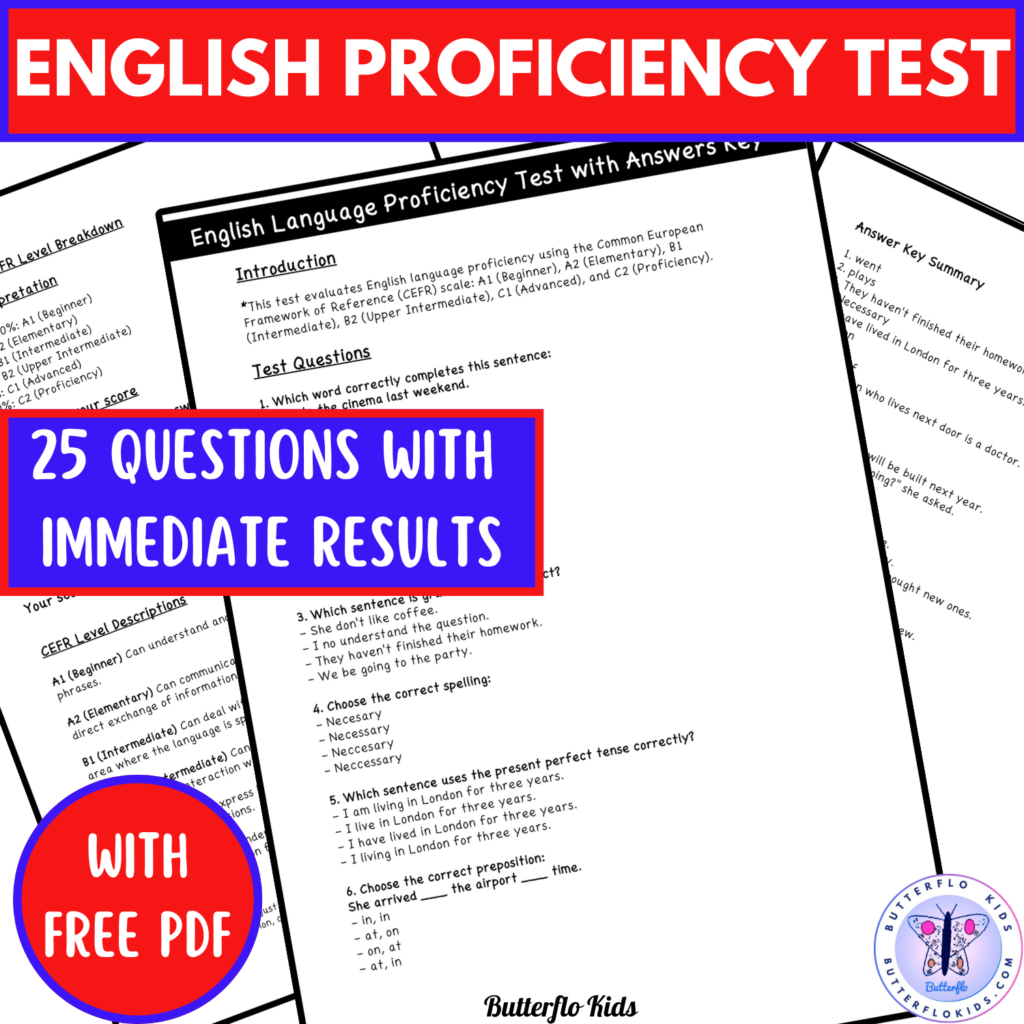
Test your students’ English level with this online proficiency test. A PDF version is also available.



